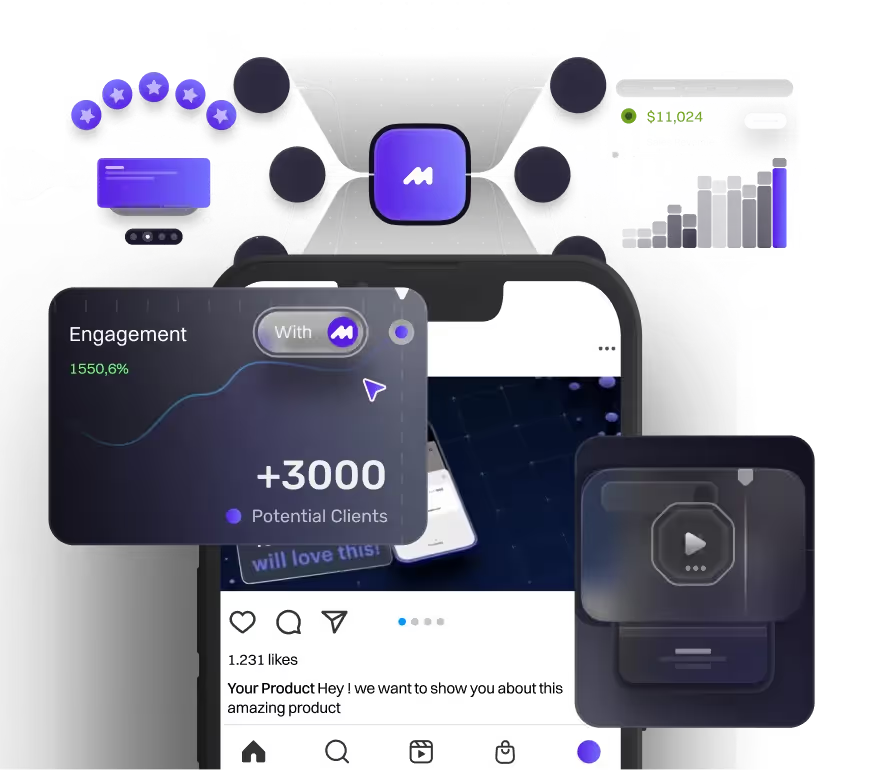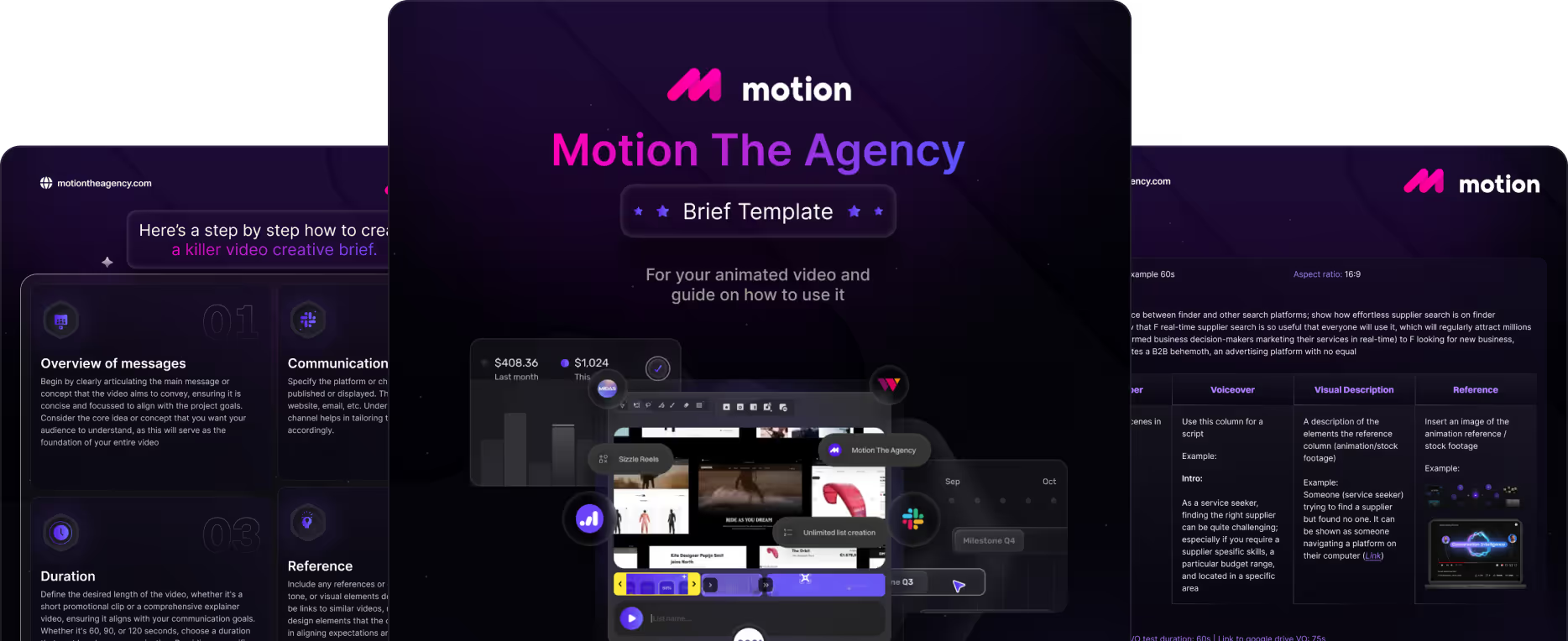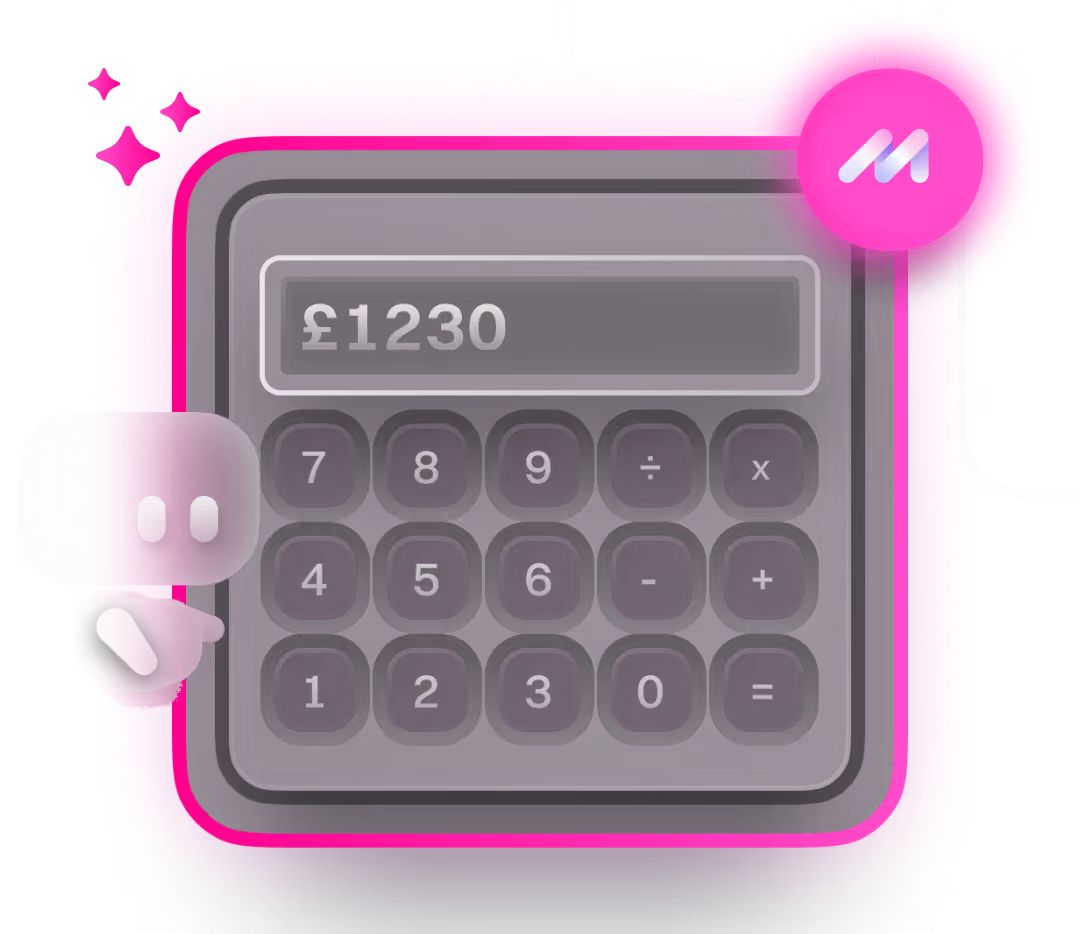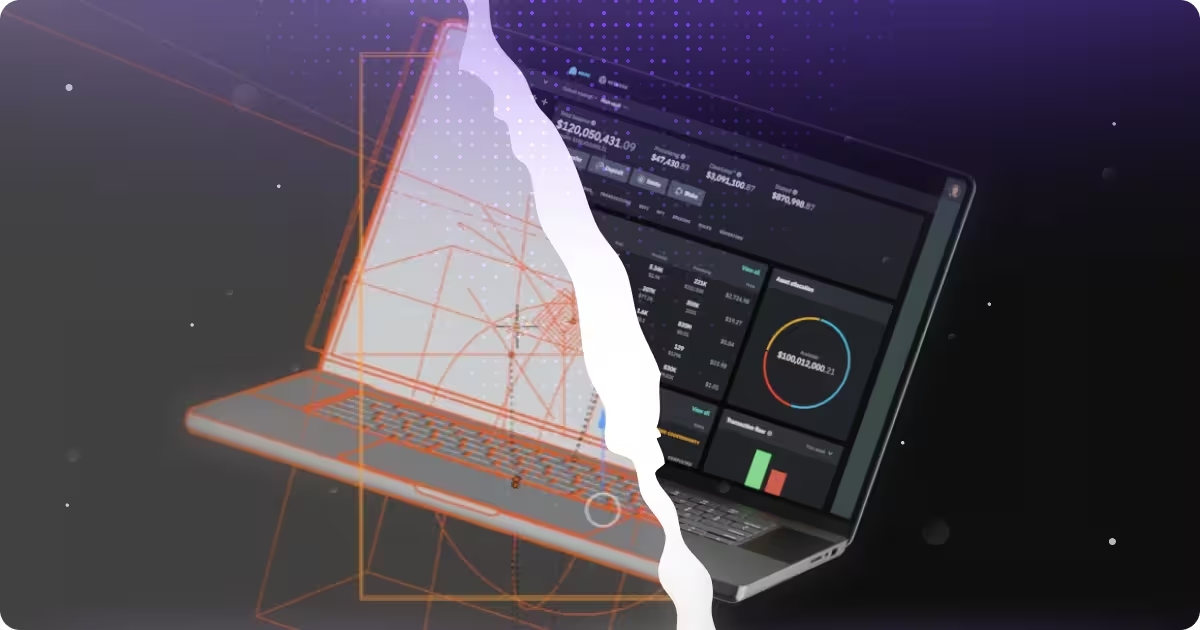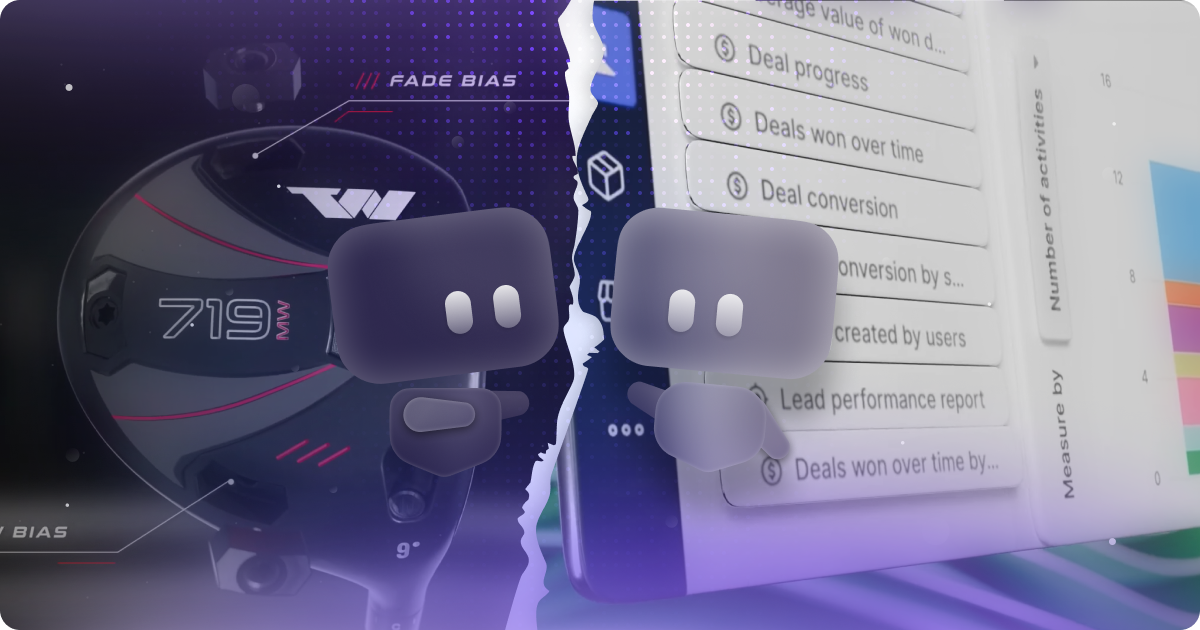What is 3D Animation? A Guide to Tools, Techniques, and Applications
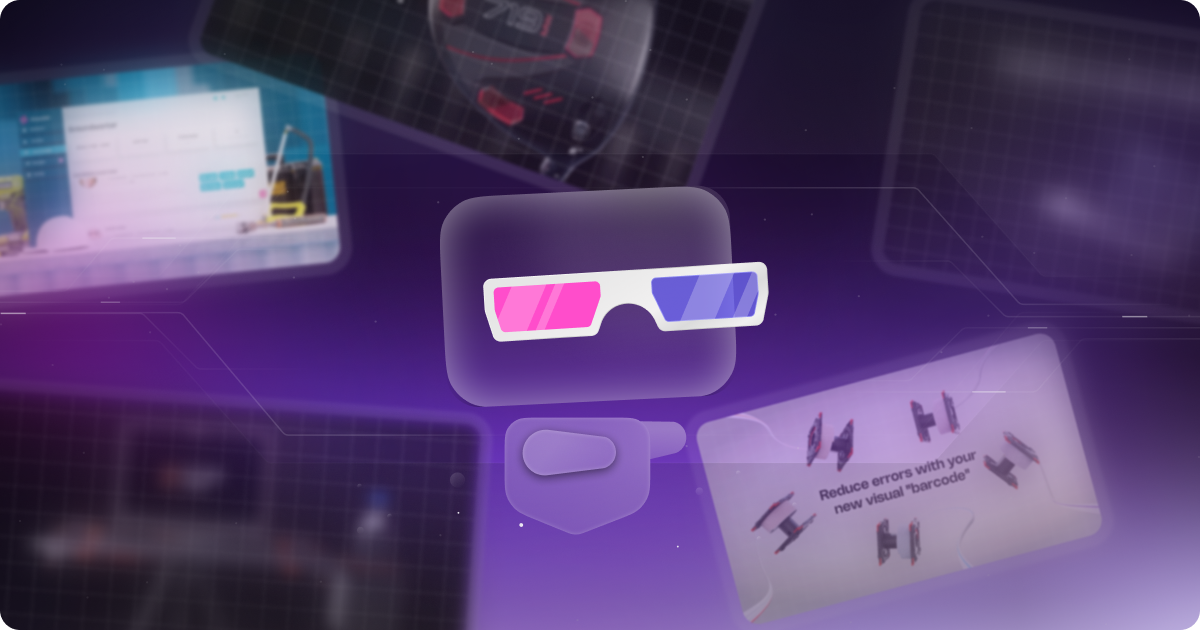

table of content
Have you ever looked up at a digital billboard and seen a video that feels like it’s about to jump right out at you? Or maybe you were watching a video on your phone and saw a product being shown from every possible angle, making you think, “No way… how did they even film that in real life?” Chances are, you were looking at a 3D animated video.
So, what is 3D animation? It’s an engaging form of digital animation that creates images moving in a three-dimensional space. In a way, 3D animation enhances 2D animation by adding depth to objects and characters, making visuals feel more realistic. But does that mean 3D animation is better than 2D? Not necessarily. The main difference is depth. 2D animation works in a flat, two-dimensional space on the x and y axes. With 3D, you have more movement possibilities, but that does not automatically make it the better format.
While you might spot 3D animation on your phone or a billboard, you have probably experienced it in almost every type of media you consume. Across industries like film, gaming, architecture, and education, 3D animation is widely used.
So why do people use it? The simple answer is that it is a powerful and visually appealing way to tell stories, explain complex concepts, and showcase products in ways that grab attention and keep people engaged.
In this article, we’re diving into everything 3D — from what it is to how it all started. Let’s jump right in!
2D vs 3D Animation
Okay, can you take a look at this image and tell us which one is the 3D animation and which one is the 2d animation.
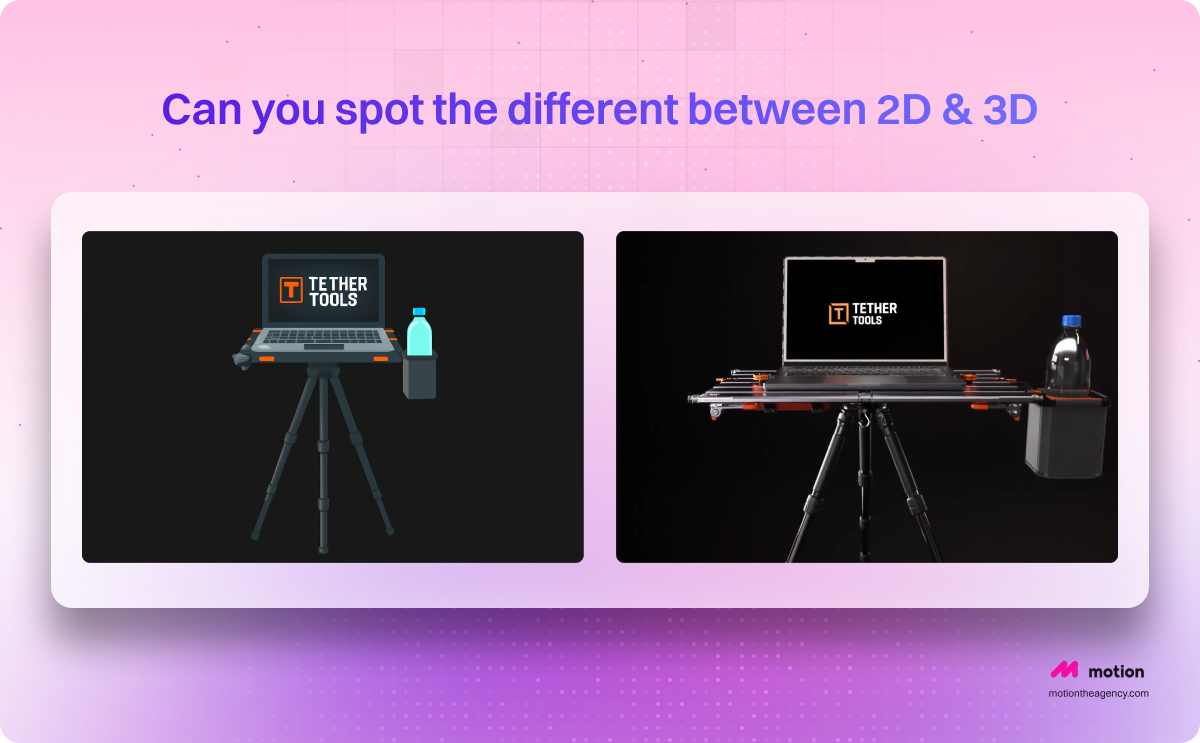
So, after observing the two pictures can you notices all the differences? well one of them is 2D design and the other is 3D design, and the easies way to differentiate them is:
- 2D design is flat. It only uses height and width, and you’ll typically see it in UI layouts, app screens, and infographics, where depth is suggested through layering or shadows.
- 3D design adds depth, volume, and realism. You can rotate objects, play with lighting, and position them in lifelike environments. It's perfect for mockups or isometric visuals.
The differences between 2D and 3D animation go beyond the final look, the whole process is different. From timelines to tools, each has its own workflow.
2D animation is simpler, which makes it faster and more affordable. It’s perfect for projects like fun, stylish explainer videos. 3D animation, on the other hand, brings objects to life by adding realistic lighting, depth, and motion from multiple angles. It looks more lifelike, but it usually costs more and takes longer because of the technical 3D animation demands and software involved.
If you want to learn more about the differences between 2D & 3D animation, check out our blog “2D vs 3D Animation Videos”.
.png)
Even the process alone shows just how different 3D animation is from 2D. 3D requires a more detailed and complex workflow, and the tools are totally different too. At the end of the day, it’s all about you and your company deciding which style fits best. Just keep in mind, not all 3D or 2D animation is created equal. Some projects need way more time, work, and resources.
Choosing the right type of animation comes down to your project goals and what you want to showcase or communicate. One key question to answer before picking a style for your product or brand is: “What type of product do I have?” We dive deeper into this in our blog “Tangible vs Intangible Products”.
Why Use 3D Animation and Who Needs Them?
One thing to keep in mind while reading this— we’re big believers that not every brand needs 3D animation. In fact, there are plenty of companies and products that we genuinely think would get way more value from other types of video. It really depends on what you’re trying to achieve.
With that said, this section is all about why 3D animation is so popular and, more importantly, who can actually benefit the most from using it. That way, you can figure out if it’s the right fit for your brand before jumping in.
Why People Use 3D Animation?
3D animation just has a way of pulling people in. Static images are nice, sure, but when something moves, feels real, and has depth, it hits different. You’re not just looking at it, you’re drawn into it. That’s why it works so well for everything from quick social ads to full-on product demos.
It’s also a great way for brands to stand out from the crowd. With 3D, you can play around with styles, trends, and creative ideas that would be harder or even impossible to pull off with just photos or flat graphics. In a crowded market, that extra wow factor can be the difference between getting noticed or getting scrolled past.
The possibilities are pretty much endless. You can make a product float through space, bend reality, or create an entire imaginary world without a massive film crew. No budget-draining shoots, no tricky logistics, just pure creative freedom.
And it’s not all about looking cool. 3D is also perfect for breaking down complex ideas. In industries like science, tech, or engineering, you can literally show people how something works step-by-step. Complex processes, inner mechanisms, big-picture ideas, it all becomes easier to understand when you can actually see it in action.
Who is 3D Animation Ideal For?
Okay before we jump in for this section, we had a full breakdown on similar topic in or blog “Who Needs (and Doesn’t Need) 3D Animation?”, so if you want to know more, please feel free to read this. We have said that 3D animation is not for everyone, there are multiple reason on why companies or products chose not to use 3D animation, such as:
- Tight timelines: Like we mentioned earlier, 3D animation comes with a more detailed and layered workflow. That means the process usually takes longer compared to other video styles. If you’re on a super short deadline, 3D might not be the best fit.
- Tight budgets: Because of the level of detail involved, animators need more time, tools, and resources to make sure the final result meets high standards. Those extra hours and specialized tools naturally add to the cost, so 3D animation is generally more of an investment.
- Brands or products that need a human touch: Sometimes the best way to showcase a product’s features is by adding real people into the mix. While it’s possible to blend 3D animation with live-action footage, brands often lean toward one or the other. If the human element is key, live-action might be a better choice.
On the other hand these or the people that we think will benefits more with 3d animation:
- Tech & Hardware: Perfect for showing gadgets, machines, and high-tech gear in detail. Great for explaining how products work and highlighting features clearly.
- Startups & Product Teams: Ideal for early-stage ideas or products not yet built. Helps showcase features, communicate concepts, and build excitement.
- E-commerce: Shows products in action, highlights features, and gives customers a clear, engaging view of what they’re buying.
- Advertising & Marketing: Eye-catching and dynamic for ads, social media, and campaigns. Grabs attention and brings brand messages to life.
The Fundamental and History of 3D animation
Okay, so we have already talked a bit about what 3D animation is and given a quick definition. Now it is time to go a little deeper into the principles behind it. In this part, we will focus on what really matters when working with 3D animation. We will look at the key things to pay attention to and the best practices that can turn a project from something that looks “okay” into something that truly stands out.
Definition and Principles of 3D Animation
At its core, 3D animation is basically taking objects, characters, or entire environments and building them inside a digital 3D space. Instead of being flat like 2D, you’ve got depth, volume, and the ability to move things around from any angle. That means you can make a product spin, zoom into a scene, or create an entire world that feels real enough to step into.
The cool part is, these 3D models are not just static shapes sitting there. Most of them have a virtual skeleton inside, which we call a rig. This lets animators control how they move and interact, just like how a puppet has joints and strings. It’s how you make a character walk, a robot arm swivel, or a coffee cup rotate smoothly on screen.
Once everything’s built and rigged, animators step in to bring it all to life. Sometimes they do it frame-by-frame, other times they let the software handle some of the movement. The main goal? Keep it smooth, believable, and fun to watch. When it’s done right, you get animation that really pulls people in, whether it’s a quick product demo, a TikTok ad, or a full-blown animated film.
One thing that we noticed is that, there are quite a lot of people that still confused 3D animation with VFX, we actually covered that topic in our blog “3D Animation, VFX, and Motion Design”.
History and Evolution of 3D Animation
We can't really talk about animation without talking about computer generated image, that is why we will start with that. The history of 3D animation started in the 1960s. Pioneers like Ivan Sutherland created the first computer-generated images. By the 1970s, advancements in wireframe modeling allowed more intricate visual representations, leading to notable breakthroughs.
One of the first uses of 3D animation in film was in 1976 with Futureworld. This film showed computer-generated hand and face animations. These animations were created by students Edwin Catmull and Fred Parke at the University of Utah.
William Fetter is credited with creating the first true 3D representation of the human form. Among the early trailblazers in animation was John Whitney. Initially, these innovations were primarily used for scientific and research purposes. However, thanks to Dr. Thomas Calvert, the creative potential of animation began to flourish as well.
The 1990s marked a turning point, with the release of Pixar’s Toy Story in 1995, the first entirely computer-animated feature film. This event revolutionized the animation industry and led to widespread adoption of 3D technology in both film and television. Since then, advancements in software, hardware, and visual effects have propelled 3D animation into virtually every visual medium. Today, 3D animation is used not only in entertainment but also in industries like healthcare, architecture, and education, showcasing its versatile and ever-evolving nature.
Popular Types of 3D Animation and Examples
Throughout our experience in this industry, we have spotted all sorts of patterns. Sometimes we notice a trend popping up in the tech world. Other times, we see a shift in what Web3 companies are focusing on. But if there is one thing we can always count on spotting, it is popular animation trends. We also want to mention that each agency tends to specialize in its own animation style, which we covered in our blog “10 Best 3D Animation Studios in 2025.”
We usually know something is trending when we get a sudden wave of client requests for a very specific type of animation. This list is exactly that. It is not a ranking and it is not every single type of 3D animation out there. It is based on a mix of our research and our real-world experience working with different clients and industries, giving us a front-row seat to see what styles are catching attention right now.
Digital 3D
Realistic CGI that brings characters, objects, and environments to life with incredible detail. This is what you see in high-budget productions where lighting, textures, and movement feel almost indistinguishable from real life.
- Used in: Films, TV shows, video games, cinematic ads.
Motion Graphics (3D)
Clean, text-driven visuals enhanced with UI elements, charts, and icons. Perfect for delivering information in a visually appealing way while keeping it easy to follow.
- Used in: Explainer videos, SaaS ads, branded content, corporate presentations.
Cutout Animation (3D-style)
A flat paper cutout aesthetic set in a 3D space. It has a fun, handmade look but still benefits from depth, movement, and perspective.
- Used in: Playful brand videos, stylized marketing campaigns, children’s educational content.
Mechanical Animation
Highly technical, CAD-based visuals showing machines, devices, or systems in precise detail. Often used when accuracy is as important as aesthetics.
- Used in: Engineering showcases, automotive design, industrial product demos.
3D UI Animation
Realistic, animated 3D representations of digital interfaces and product screens. Great for showing how a product works before it even exists in real life.
- Used in: SaaS demos, app product tours, onboarding flows, investor pitch videos.
3D Product/Explainer Video
Fully animated 3D videos that highlight product features, benefits, and design. Often includes close-up “beauty shots” or exploded views to show inner workings.
- Used in: Marketing campaigns, landing pages, e-commerce product launches.
Cel Shading
A stylized 3D technique that mimics hand-drawn animation, using bold outlines and flat colors for a unique, illustrative feel.
- Used in: Animated series, indie films, stylized video games.
This blog has been long enough without diving too deep, but if you want a more detailed breakdown, we cover this topic in our blog “3D Animation for Product Videos: Types, Techniques, and Real Examples.” Give it a read when you get the chance.
Popular Techniques for 3D Animation
The same like the popular types, this is by no means the only techniques that 3D animation use, or that this is a ranking list. This is just a few techniques that we got requested quite a lot and keep appearing even during our research.
Exploded View Animation
What it is: This is where you take your product apart piece by piece in a way that feels intentional and engaging. Every layer or component is shown so people can clearly see how it is built. It works really well when you want to highlight the engineering or craftsmanship behind it.
Cutaway 3D Animation or Cutaway Render
What it is: Picture slicing open your product to reveal what is inside while still keeping the outside visible. It is a clean and stylish way to show the inner workings without overwhelming viewers with too much detail at once.
Object Representation
What it is: This focuses on showing your product in the best possible light. The emphasis is on surface detail, texture, and realism so it looks polished and high-quality. It is perfect for beauty shots or close-ups that really showcase the design.
The Technical Process of Creating 3D Animation Videos
So we actually talk about this a more detail way in our blog “How 3D Product Animation Can Help You Stand Out from the Competition”. In this section we will walkthrough everything briefly and will give examples along the way to make it easier for you to understand.
Storyboarding
.png)
This is where everything starts coming together. We take the script and turn it into a sequence of sketches, kind of like a comic strip. It gives everyone a clear picture of how the story will flow before we start building anything in 3D. A solid storyboard keeps the whole project on track.
Modeling
.png)
Here we actually build the 3D objects, characters, or environments. Think of it like sculpting, but on a computer. The more detail we put in here, the better the animation will look in the end.
Texturing
.png)
Without textures, a model just looks plain and flat. This step is where we add all the details like colors, patterns, and surface materials so things like wood, metal, or glass look real. Getting this right is a big part of making the animation believable.
Rigging
.png)
This is where we add the “skeleton” to the models so they can move naturally. It also sets up controls for animators to pose and move objects or characters. A good rig makes everything from simple movements to complex actions look smooth.
Animating and Blocking
.png)
This is the fun part where things start moving. Whether it is a character walking, a product rotating, or an environment coming to life, animation adds energy and realism. Even small touches, like a blink or a slight camera tilt, can make a big difference.
Lighting
.png)
Lighting sets the mood and makes the scene feel real. We use it to create depth, highlight details, and make sure the viewer’s attention goes where it needs to. Good lighting can completely change how a scene feels.
Compositing and Editing
This is the final stage where we bring everything together. We combine all the visuals, add any special effects, and fine-tune the timing. It is also when we sync up music, sound effects, or voiceovers so the finished video feels complete and ready to share.
3D Animation Software
Like we mentioned earlier, the tools you need for 3D animation are pretty different from 2D. With 2D, one tool can usually handle a bunch of tasks, but 3D is a whole different ball game.
We’ve put together a table to break down what each tool does and how it’s used. Just a heads-up though, this isn’t a list of every 3D tool out there. We’re focusing on six tools from three different industries that are considered the go-to standards. If you want to read about 3D animation tools, and how we utilized them, feel free to check our blog “Not All 3D Software is the Same”
Entertainment Industry
.png)
Autodesk Maya is the go-to for character animation, rigging, and scene rendering in films, TV, and high-end VFX. It is made for animators who need precision and flexibility with tools for rigging, motion capture, and rendering with engines like Arnold. Studios use it for everything from realistic character movements to full cinematic environments. It can be tricky to learn at first, but that is why so many pros rely on it.
.png)
Side FX Houdini is built for dynamic simulations and procedural effects. Smoke, fire, water, explosions, even big crowd scenes, Houdini can handle it. Its node-based workflow makes complex, physics-based effects faster than traditional animation. It is a bit more technical, but that is what makes it perfect for VFX-heavy films, games, and ads. Studios love it because it lets them create effects that push what is possible on screen.
Architecture & Interior Design
.png)
During our research on 3D software, SketchUp came up as one of the most popular tools in architecture and interior design. Its simple interface and easy learning curve make it a favorite for architects and designers who want to create quick, detailed 3D models without using complex CAD software. It works great for conceptual design, urban planning, and interior layouts.
.png)
For high-end, photorealistic visualization, Autodesk 3ds Max is the go-to. Professional architects and visualization artists use it for powerful rendering, precise lighting, and lifelike textures. If you’ve ever seen a hyper-realistic rendering of a modern building before it is built, there’s a good chance it was made in 3ds Max.
Motion Design and Advertising
.png)
For motion design, UI animation, and branding visuals, Cinema 4D is a favorite in advertising. It’s super easy to pick up, with an intuitive interface that beginners can jump into, while pros still get all the advanced tools they need. Another win is how smoothly it works with After Effects, making 2D and 3D animation play nicely together.
.png)
Blender is also gaining traction for motion graphics, explainer videos, and dynamic animations, especially with smaller studios and independent creators. The best part? It’s free. Being open-source, it’s always improving thanks to a huge global community adding new features. It’s an all-in-one tool for modeling, animation, sculpting, and rendering, so it’s a solid alternative to more expensive software.
Here at Motion The Agency, we actually use both Cinema 4D and Blender for our 3D projects. The cool thing is we can switch between them depending on what a project needs. To make that happen, we added an extra step to our workflow by exporting working files as FBX or OBJ. That way, moving back and forth between Cinema 4D and Blender is smooth, and we can always get the best result for every project.
How Much Does a 3D Animation Video Cost
.png)
It’s tricky to talk about other agencies’ prices since the cost really depends on what type of 3D animation you’re after. We cover this a bit in the 2D vs 3D section of this article. Not all 3D videos are the same. For example, 3D character design or a full 3D product animation will cost more and take more resources than a simpler 3D UI animation.
Making high-quality 3D animations takes the right skills, tools, and a talented team. Working with pros like Motion The Agency means every frame meets top industry standards without cutting corners.
For our projects, 3D animation usually ranges from £2,100 to £4,900, depending on style, length, and timeline. That includes everything from pre-production to final delivery. We also include unlimited storyboard revisions, so you can tweak your vision without worrying about extra costs. Every project is unique and tailored to your brand, and the price reflects the complexity, level of detail, and style needed. To help you with this we have free cost calculator that could estimate your next project cost.
Conclusion
3D animation isn’t just about making things move. It’s about turning ideas into visuals that grab attention and make complex messages easy to understand. Whether it’s for branding, marketing, gaming, or education, 3D animation helps take complicated concepts and make them visually clear and engaging.
At its core, 3D animation is all about modeling, texturing, rigging, and keyframing, making sure everything moves smoothly and realistically. With tech evolving fast, AI, VR, and AR are pushing 3D animation even further, creating interactive and immersive experiences. Whether you want to showcase a product, tell a brand story, or build a fully digital experience, high-quality 3D animation can help your brand stand out.
That said, 3D animation isn’t always the right fit. While it’s powerful, sometimes 2D animation, live-action, or a mix works better depending on your audience and goals. The key is knowing when 3D will really add value and when another approach might hit harder.
Not sure if 3D animation is right for you? Let’s bring your vision to life and figure it out together. Book a call and let’s talk!
FAQ

Contact Us
Ready to elevate your brand? Contact us for your
Free Custom Video Sample
